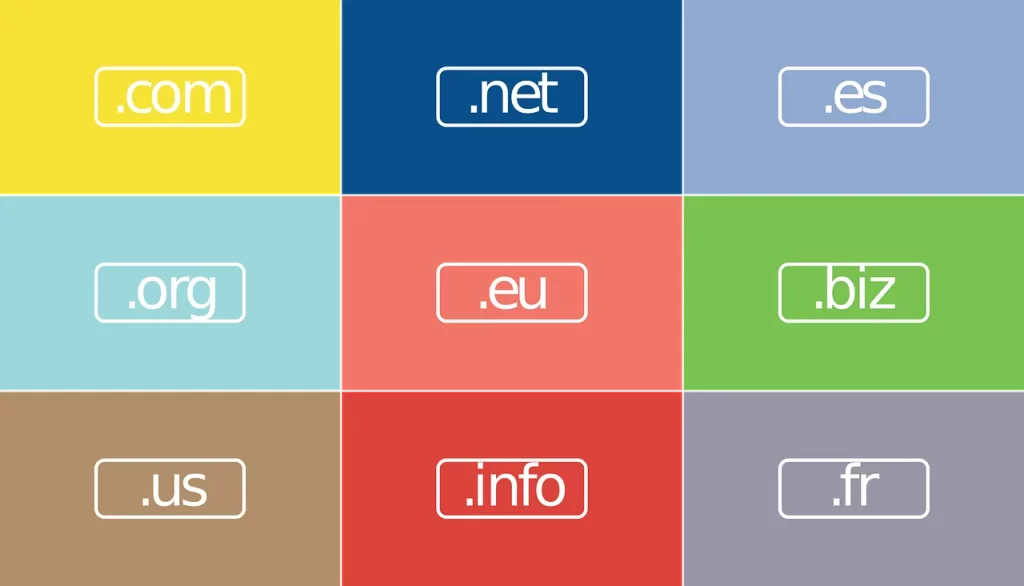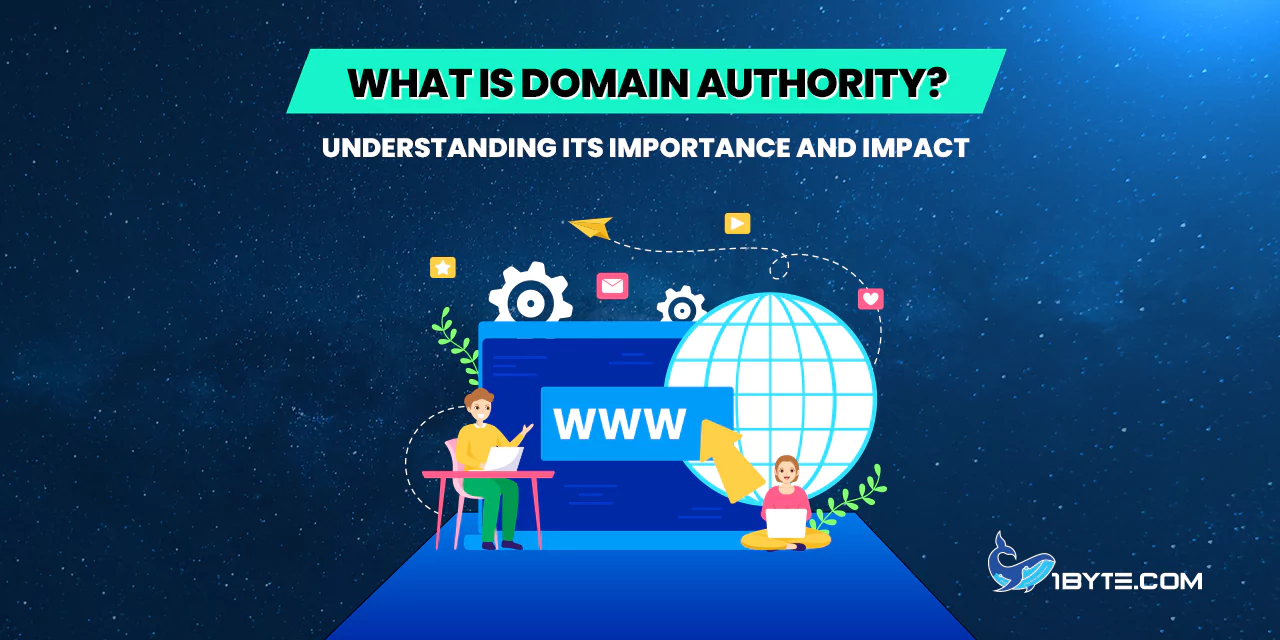- Understanding Domain Authority
-
10 Proven Strategies for How to Increase Domain Authority
- Strategy 1: Quality Content
- Strategy 2: On-Page SEO
- Strategy 3: Link Building
- Strategy 4: Internal Linking
- Strategy 5: Social Media Engagement
- Strategy 6: Mobile-Friendliness
- Strategy 7: Website Loading Speed
- Strategy 8: Regular Updates
- Strategy 9: User-Friendly Website Architecture
- Strategy 10: Register Domain for a Longer Period
- Conclusion
Welcome to this guide on how to increase domain authority. Domain authority is a key metric in SEO. It predicts how well a website will rank on search engine result pages. This guide will provide you with 10 proven strategies to boost your domain authority.
First, let’s understand the concept. Domain authority is a score ranging from 0 to 100. It’s calculated based on multiple factors. These include the number of inbound links and the quality of these links. A higher score means a stronger ranking potential.
Now, why should you care about domain authority? It’s simple. A higher domain authority can lead to higher search rankings. This can result in more organic traffic to your website. So, learning how to increase domain authority is crucial for your website’s success.
Stay tuned as we delve into the strategies. We’ll provide specific examples and link to reports for further reading. Remember, increasing domain authority is not an overnight process. It requires a strategic and consistent approach. But with patience and persistence, you can improve your website’s domain authority.
Understanding Domain Authority
Let’s dive into the core of our topic: how to increase domain authority. Domain authority is a search engine ranking score. It predicts how well a website will rank on search engine result pages. The score ranges from 0 to 100. Higher scores indicate greater ranking potential.
How domain authority is calculated
Now, let’s delve into how domain authority is calculated. It’s a complex process. It involves evaluating multiple factors. These include linking root domains and the total number of links. All these factors are combined into a single DA score.
This score is not static. It often fluctuates due to the machine learning calculations that it’s based on. As more, fewer, or different data points become available, they are incorporated into the calculations. This can cause your site’s score to change.

For example, if a well-established domain like Facebook were to acquire a billion new links, every other site’s DA would drop relative to Facebook’s. This is because more established and authoritative domains like Facebook have increasingly larger link profiles. They take up more of the high-DA slots, leaving less room at the higher end of the scale for other domains with less robust link profiles.
Therefore, it’s significantly easier to grow your score from 20 to 30 than it is to grow it from 70 to 80. For this reason, it’s important to use Domain Authority as a comparative metric rather than an absolute one.
You can check your domain authority using Moz’s free domain authority checker. It provides a snapshot of the actionable data that powers Moz’s products. For a more in-depth domain analysis, you can try Moz Pro. It allows you to track thousands of websites and pages.
Importance of domain authority in SEO
Let’s explore the importance of domain authority in SEO. Domain authority is a key metric. It predicts a website’s ability to rank in search engine result pages. A higher score indicates greater ranking potential.
Domain authority is not a Google ranking factor. Yet, it’s crucial for SEO. It’s based on a machine learning algorithm’s predictions. The algorithm predicts how often Google uses that domain in its search results. If domain A is more likely to appear in a Google SERP than domain B, we would expect domain A’s DA to be higher than domain B’s DA.
According to Moz, 21% of Google’s ranking algorithm depends on “link authority characteristics”. This is the number of links to a domain and the quality of those links. Additionally, 19% depends on page-level link characteristics. That is, the number of links to a particular page.
Domain authority serves as a comparative metric. It allows you to gauge the strength of your website in relation to others. A higher DA score suggests that your site has a better chance of ranking higher in search engine results. This can lead to more organic traffic.
10 Proven Strategies for How to Increase Domain Authority
Welcome to the heart of our guide: 10 Proven Strategies to Increase Domain Authority. This section is dedicated to helping you understand how to increase domain authority. We’ll explore strategies that are backed by data and proven to be effective.
Strategy 1: Quality Content
Let’s start with Strategy 1: Quality Content. Quality content is the backbone of SEO. It’s a key factor in how to increase domain authority.
Quality content is accurate, comprehensive, original, and professionally presented. It matches your audience’s search intent. This means it answers the questions your audience is asking.
Quality content has a significant impact on SEO. Companies that publish blogs get 55% more traffic. They have 434% more pages indexed by search engines. These blog-publishing websites also had 97% more backlinks than non-blog sites.
Quality content attracts backlinks. Backlinks are links from other websites to your site. They influence how search engines perceive your website’s authority and relevance. Quality content can enhance your online reputation and attract more organic traffic.
Strategy 2: On-Page SEO
Let’s move on to Strategy 2: On-Page SEO. On-page SEO is a critical factor in how to increase domain authority. It involves optimizing individual web pages. This ensures that they rank higher and earn more relevant traffic in search engines.

On-page SEO includes both the content and HTML source code of a page. It differs from off-page SEO, which refers to links and other external signals. On-page SEO looks at what your site is about. Off-page SEO looks at how authoritative and popular your site is.
According to a report by Backlinko, Google uses over 200 factors in their algorithm for ranking websites. On-page SEO factors like high-quality content, page experience, and links ranked as the top 3 ranking factors of Google’s search results.
Here are some key on-page SEO practices:
- Keyword Optimization: This involves using relevant keywords in your content.
- Meta Tags: These are snippets of text that describe a page’s content.
- Schema Mark-up: This is a semantic vocabulary added to a website to help search engines understand the content.
- Internal Linking: This involves linking to other pages on your website.
- Images: Optimizing images can help improve your site’s SEO.
- Page Speed: A faster page load time can boost your site’s SEO.
- Featured Snippets: These are selected search results featured on top of Google’s organic results.
Remember, on-page SEO is a crucial part of how to increase domain authority. So, keep these points in mind as you work on improving your website’s SEO.
Strategy 3: Link Building
Let’s explore Strategy 3: Link Building. Link building is a key factor in how to increase domain authority. It involves acquiring hyperlinks from other websites to your own.
Link building is crucial for SEO. According to 13% of search experts from enterprise companies, it’s the most important SEO tactic. 52% of digital marketers noticed the direct impact of link building on organic search rankings. About 58% of businesses believe link building affects their ranking in the SERPs.
Here are some key link building statistics:
- 93.8% of link builders say link quality is more important than link quantity.
- 79.7% of SEOs consider link building an important part of their SEO strategy.
- 52.3% of digital marketers say link building is the hardest part of SEO.
- Only 2.2% of content gets links from more than one site.
- Google’s page ranking algorithm regards links as one of the top two criteria considered.
- According to SEO experts, backlinks are the third most important factor for ranking a site.
- The vast majority of online content, around 94%, does not receive any external links.
- The number of backlinks a web page has is directly correlated with the amount of organic traffic it receives.
Link building can be done in various ways. These include guest posting, broken link building, and using social media. Each method has its own benefits and challenges.
Remember, link building is a proven strategy for how to increase domain authority. So, keep these points in mind as you work on improving your website’s SEO.
Strategy 4: Internal Linking
Let’s delve into Strategy 4: Internal Linking. Internal linking is a key factor in how to increase domain authority. It involves creating hyperlinks that point to other pages on your website.
Internal linking is crucial for SEO. In fact, 51% of SEOs suggest including two to three internal links in articles. Meanwhile, 36% recommend adding three to five. These links guide readers to find content on your website. They also help search engines navigate through your site.
Here are some key internal linking practices:
- Link Important Pages From the Homepage: This helps distribute link authority to important pages.
- Add Internal Links In the Body of a Page: This provides a clear path for readers to find the information they need.
- Link New Pages To Old Pages And Vice Versa: This helps Google find, index, and understand all of the pages on your site.
- Use Keyword-Rich Anchor Text: This helps users and Google understand what the page you’re linking to is about.
- Add Links To Important Pages: This sends link authority to important pages, which can help them rank better in Google.
- Make Internal Links DoFollow: This allows search engines to follow the link and pass on link juice.
Remember, internal linking is a proven strategy to increase domain authority. So, keep these points in mind as you work on improving your website’s SEO.
Strategy 5: Social Media Engagement
Let’s delve into Strategy 5: Social Media Engagement. Social media engagement is a key factor in how to increase domain authority. It involves interacting with your audience on social media platforms.
Social media engagement is crucial for SEO. In fact, brands that have an active social media presence see a 23% revenue increase. Globally, over 3.6 billion people are active on social media. This presents a huge opportunity for marketers and advertisers.
Here are some key social media engagement practices:
- Post Regularly: This keeps your audience engaged and increases your visibility.
- Respond to Comments: This shows your audience that you value their input.
- Use Hashtags: This can help increase your reach.
- Share User-Generated Content: This can help build trust with your audience.
- Host Contests and Giveaways: This can increase engagement and attract new followers.
Remember, social media engagement is a proven strategy to increase domain authority. So, keep these points in mind as you work on improving your website’s SEO.
Strategy 6: Mobile-Friendliness
Let’s explore Strategy 6: Mobile-Friendliness. Mobile-friendliness is a key factor in how to increase domain authority. It involves optimizing your website for mobile devices.

Mobile-friendliness is crucial for SEO. In fact, mobile devices generated 59% of worldwide mobile traffic in the final quarter of 2022. It’s not just users that predominantly view your site from a mobile device, but Googlebot too. In 2016, Google announced mobile-first indexing. As a result, Google predominantly crawls the web via the Googlebot smartphone user agent. This means that Google will primarily use the mobile version of content for indexing and ranking.
Here are some key mobile-friendliness practices:
- Responsive Design: This involves designing your website so it looks and works well on any device.
- Fast Loading Times: Mobile users expect websites to load quickly.
- Easy Navigation: Mobile users should be able to easily navigate your website.
- Readable Text: The text on your website should be easy to read on a small screen.
- Clickable Links: Links and buttons should be large enough to be easily clicked on a small screen.
Remember, mobile-friendliness is a proven strategy for how to increase domain authority. So, keep these points in mind as you work on improving your website’s SEO.
Strategy 7: Website Loading Speed
Let’s delve into Strategy 7: Website Loading Speed. Website loading speed is a key factor in how to increase domain authority. It refers to how quickly a website becomes fully accessible to a user after they request it.
Website loading speed is crucial for SEO. In fact, the average web page load time is 2.5 seconds on desktop and 8.6 seconds on mobile. The average desktop First Input Delay (FID) speed is 12.73 milliseconds, and on mobile, it’s 59.73 milliseconds. Webpages on mobile take on average 70.9% longer to load than on desktop.
Here are some key website loading speed statistics:
- Only the top 20% of websites record a server response time below 312ms.
- Only 15% of websites have acceptable loading times.
- 46% of websites load in around 6-10 seconds.
- Large web pages take 381% more time to load than smaller web pages.
- The fastest load times worldwide are found in China, Japan, and Germany.
- The slowest loading times for web pages were recorded in Australia, India, and Brazil.
- 50.6% of customers often blame poor internet connection for loading delays before blaming the websites.
You can evaluate your page speed with Google’s PageSpeed Insights. It incorporates data from CrUX (Chrome User Experience Report) and reports on two important speed metrics: First Contentful Paint (FCP) and DOMContentLoaded (DCL).
Strategy 8: Regular Updates
Let’s explore Strategy 8: Regular Updates. Regular updates are a key factor in how to increase domain authority. It involves keeping your website content fresh and up-to-date.
Regular updates are crucial for SEO. In fact, bloggers who update old content are “twice as likely to report success”. Google has reduced the number of irrelevant results appearing on search results pages by over 40% in the past five years due to frequent updates.
Here are some key regular update practices:
- Update Old Content: This involves revising and improving existing content.
- Add New Content: This involves creating new content on a regular basis.
- Remove Outdated Content: This involves deleting content that is no longer relevant.
- Check for Broken Links: This involves fixing or removing any broken links.
- Update Metadata: This involves updating the meta tags and descriptions.
Remember, regular updates are a proven strategy for how to increase domain authority. So, keep these points in mind as you work on improving your website’s SEO.
Strategy 9: User-Friendly Website Architecture
Let’s delve into Strategy 9: User-Friendly Website Architecture. User-friendly website architecture is a key factor in how to increase domain authority. It involves organizing your website’s pages in a way that is easy for users and search engine crawlers to navigate.
User-friendly website architecture is crucial for SEO. In fact, Google’s algorithms prioritize websites that offer a superior user experience. These algorithms assess various UX factors such as mobile responsiveness, page load speed, and ease of navigation.
Here are some key user-friendly website architecture practices:
- Keep a Simple Hierarchy: A simple hierarchy keeps information organized and easy to find.
- Organize Subpages in Proper Categories: Proper categorizing of subpages is essential for user experience and SEO.
- Implement Logical Internal Linking: This involves creating hyperlinks that point to other pages on your website.
- Optimize URL Structure: This involves creating URLs that are easy to read and understand.
- Keep Sitemaps Updated: This involves regularly updating your sitemap to reflect any changes to your website.
Remember, user-friendly website architecture is a proven strategy for how to increase domain authority. So, keep these points in mind as you work on improving your website’s SEO.
Strategy 10: Register Domain for a Longer Period
Let’s explore Strategy 10: Register Domain for a Longer Period. Registering your domain for a longer period is a key factor in how to increase domain authority. It involves securing your domain name for an extended period.
Registering your domain for a longer period is crucial for SEO. In fact, there were 249.9 million registered domains in 2022, representing a year-over-year decline of 4%. Most of the decline is due to the decrease in registrations of coronavirus-related domains. The .fr domain was one of the most successful domain extensions in 2022, reaching the 4 million registration mark.
Here are some key practices for registering your domain for a longer period:
- Secure Your Domain: This involves registering your domain for a longer period to prevent it from being taken by someone else.
- Build Trust with Search Engines: Search engines may view domains registered for a longer period as more trustworthy.
- Avoid Expiration: This involves ensuring that your domain does not expire, which could lead to a loss of traffic.
- Save Money: Registering your domain for a longer period can often be cheaper than renewing it every year.
Remember, registering your domain for a longer period is a proven strategy to increase domain authority. So, keep these points in mind as you work on improving your website’s SEO.
Leverage 1Byte’s strong cloud computing expertise to boost your business in a big way
1Byte provides complete domain registration services that include dedicated support staff, educated customer care, reasonable costs, as well as a domain price search tool.
Elevate your online security with 1Byte's SSL Service. Unparalleled protection, seamless integration, and peace of mind for your digital journey.
No matter the cloud server package you pick, you can rely on 1Byte for dependability, privacy, security, and a stress-free experience that is essential for successful businesses.
Choosing us as your shared hosting provider allows you to get excellent value for your money while enjoying the same level of quality and functionality as more expensive options.
Through highly flexible programs, 1Byte's cutting-edge cloud hosting gives great solutions to small and medium-sized businesses faster, more securely, and at reduced costs.
Stay ahead of the competition with 1Byte's innovative WordPress hosting services. Our feature-rich plans and unmatched reliability ensure your website stands out and delivers an unforgettable user experience.
As an official AWS Partner, one of our primary responsibilities is to assist businesses in modernizing their operations and make the most of their journeys to the cloud with AWS.
Conclusion
In conclusion, understanding how to increase domain authority is crucial for your website’s success. It’s a key metric in SEO. It predicts how well a website will rank on search engine result pages. A higher score indicates greater ranking potential.
We’ve explored 10 proven strategies for how to increase domain authority. These include creating quality content, optimizing on-page SEO, building links, implementing internal linking, engaging on social media, ensuring mobile-friendliness, improving website loading speed, updating your website regularly, maintaining a user-friendly website architecture, and registering your domain for a longer period.
Each strategy is unique. They require a strategic and consistent approach. But with patience and persistence, you can improve your website’s domain authority.

